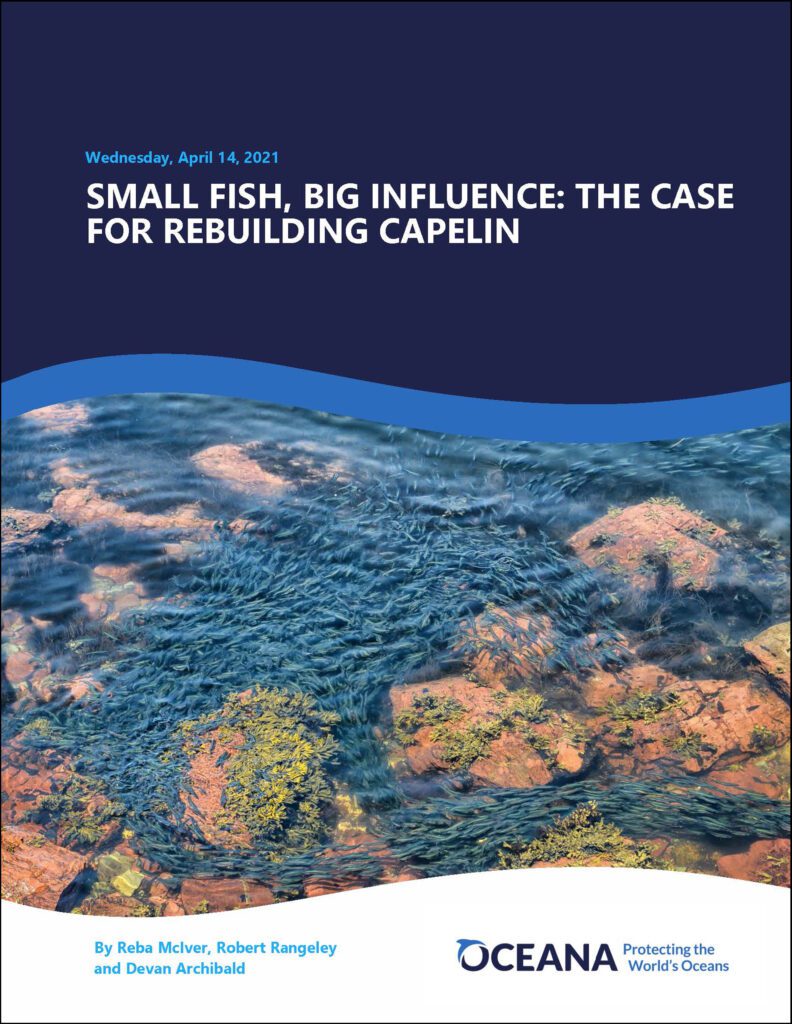Report | April, 2021
Small Fish, Big Influence: The Case for Rebuilding Capelin
The foundation of Canada’s blue economy is our wild fish populations. Forage fish – the small, schooling fish like herring, capelin and shrimp that feed larger predators – are vital contributors to wild fisheries in Canada. They are targeted directly in fisheries and contribute indirectly as prey to other commercially important fish, like cod, halibut and tuna.
Off the coasts of Newfoundland and Labrador, capelin is a species of forage fish that serves as an important food source for many animals, including iconic northern cod, humpback whales and seabirds. The northeast Newfoundland and Labrador capelin stock (2J3KL) historically sustained an abundant fishery but collapsed in the early 1990s and today is at only six per cent of pre-collapse estimates, while a fishery continues to operate. The outlook for this stock is dire unless Fisheries and Oceans Canada takes immediate action.
Oceana Canada recommends that Fisheries and Oceans Canada:
1) Immediately pause the 2J3KL capelin fishery
2) Develop and implement a forage fish-specific management plan to prevent overfishing before resuming the capelin fishery
The management plan must include:
- A precautionary approach framework;
- A minimum stock size biomass, below which it cannot be fished; and
- A harvest cap, which limits the amount that can be fished.
Media contact
Tammy Thorne (Oceana Canada), tthorne@oceana.ca, 437-247-0954
Additional Resources
- Sign the petition calling on the Canadian government to rebuild fish populations


